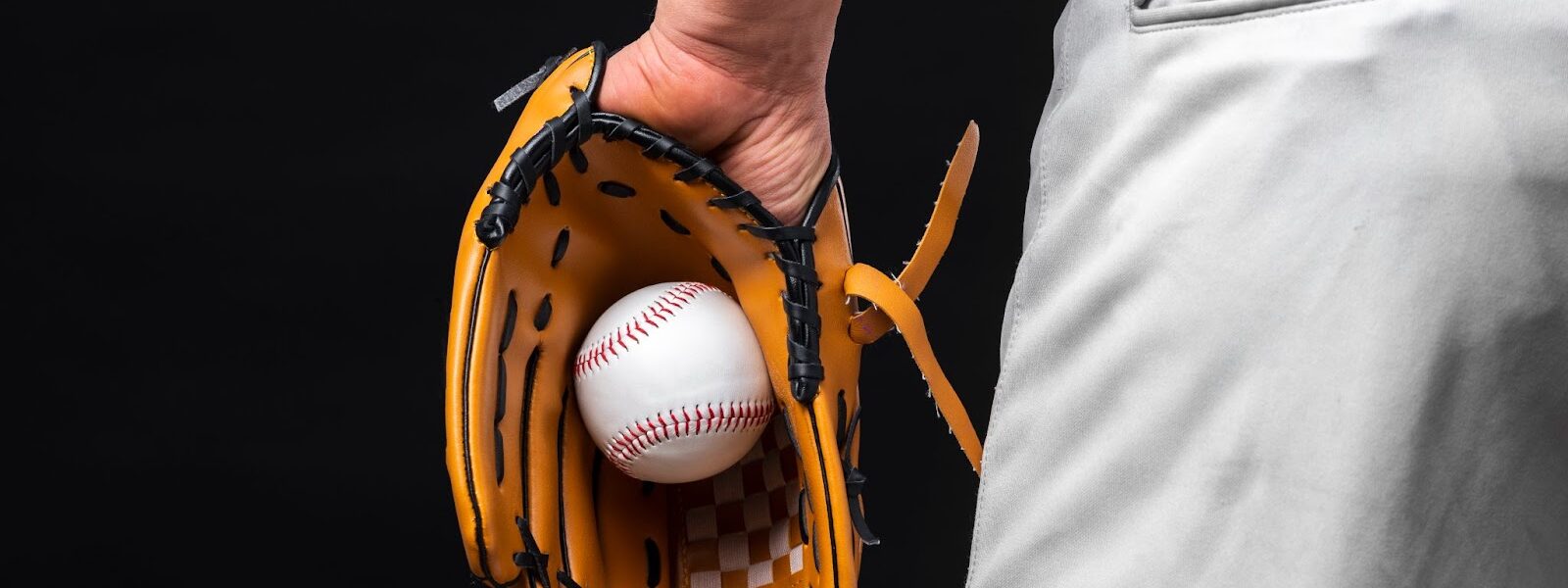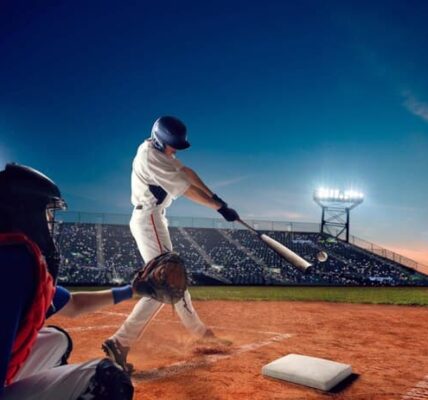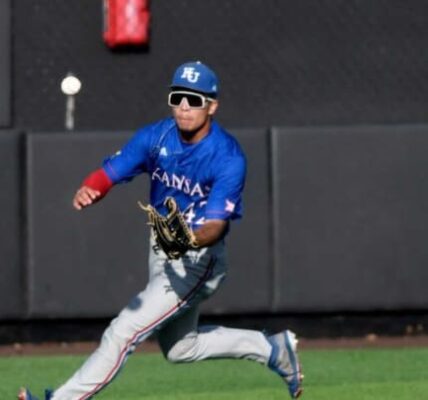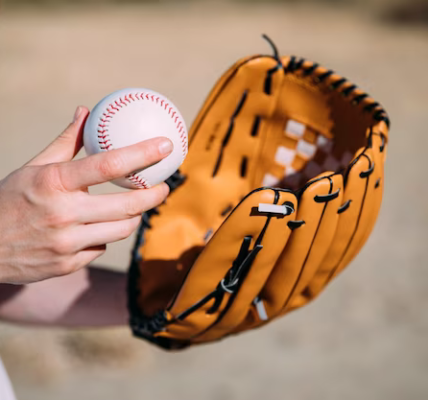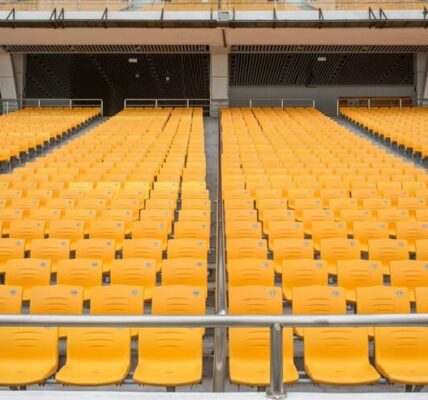In the realm of Major League Baseball (MLB) games, an average of 84 to 120 baseballs find their way onto the field. At the upper echelon, a game may consume as many as 120 of these baseballs, signifying a substantial quantity.
As the nine innings unfold, the seemingly lavish count of 120 baseballs begins to accumulate. This isn’t solely attributable to the core gameplay but also factors in the warm-up sessions that occur between innings, the trajectory of foul balls, those that plummet into the dirt, and the majestic home runs that send baseballs soaring into the stands.
In this intricate dance of the sport, a pitcher retains the prerogative to request a fresh baseball at any juncture, particularly if the current one exhibits signs of wear, tear, or scuffing. Furthermore, baseballs are promptly replaced when they are propelled out of the play area or when their once-pristine appearance becomes tainted. Nevertheless, even when a baseball is relieved of its duties on the field, it does not necessarily signify the conclusion of its serviceable life. In this article, we delve deeper into the fascinating world of baseballs used during MLB games, shedding light on the intricacies and significance behind their constant rotation.
Do MLB Reuse Baseballs? The Fascinating Lifecycle of MLB Baseballs
Have you ever wondered what happens to those baseballs in Major League Baseball (MLB) games once they’ve been discarded? Contrary to what you might think, they aren’t simply tossed aside and forgotten. In this comprehensive guide, we’ll delve into the intriguing world of MLB baseballs, exploring their lifecycle, from their use on the field to their ultimate fate as memorabilia.
1. The Afterlife of Discarded Baseballs
When a baseball is deemed no longer fit for play, it doesn’t go to waste. Instead, MLB has an elaborate system in place to give these baseballs a second life:
- Authentication: Each discarded baseball is meticulously authenticated. This process involves recording details about what happened during the play in which the ball was used before being discarded;
- Memorabilia: Authenticated baseballs find their way to MLB shops where they are sold as memorabilia. Fans and collectors eagerly snatch up these baseballs, which carry a piece of MLB history with them;
- Home Team Collection: The home team often takes charge of collecting and selling these discarded baseballs. Not only does this contribute to the team’s revenue, but it also allows fans to own a piece of their favorite team’s game.
2. The Frequent Replacement of Baseballs in Games
Ever wonder how often baseballs are replaced during an MLB game? It turns out that this happens more frequently than you might imagine. The rate of replacement typically ranges from every three to seven pitches. Several factors influence when a baseball gets swapped out:
- Play Outcome: Depending on the outcome of a play, the baseball may be replaced. Wild pitches, passed balls, and plays that result in the ball hitting the dirt are common triggers for replacement;
- Ball Quality: The quality of the ball itself plays a role in when it’s replaced. If the ball becomes scuffed, discolored, or loses its shape, it’s likely to be swapped out;
- Damage Assessment: Umpires and officials carefully assess baseballs to ensure they are in suitable playing condition. Any signs of damage may prompt a replacement;
- Game Context: The significance of the moment in the game can also influence when baseballs are replaced. In high-stakes situations, pitchers and teams may request a new ball for added control.
3. The Fate of Baseballs That Hit the Dirt
In modern baseball, any time a baseball makes contact with the dirt, it’s usually taken out of play. Here’s what happens to these dirtied baseballs:
- Discard and Replace: As soon as a baseball touches the dirt, it’s immediately discarded and replaced with a clean one. This ensures that the game continues with the best possible equipment;
- Batting Practice: Some of the discarded baseballs, especially those that are still in good condition, may find a second life during batting practice. Players use them to hone their skills;
- Minor Leagues: Other dirtied baseballs may be sent down to the minor leagues, where they can continue to serve a purpose in developing future MLB talent;
- Fan Interaction: Occasionally, when a catcher passes a baseball to an umpire that has hit the dirt, the umpire might hand it over to a lucky young fan in the stands, creating memorable moments for baseball enthusiasts of all ages.
Why Umpires Replace Baseballs: Ensuring Fair Play and Safety
Scuffed, dirt-stained baseballs, seemingly innocuous, can hold the power to tilt the scales in favor of the pitcher, skewing the game’s fairness. It’s an intriguing facet of baseball that hinges on the intricate balance between tradition and competition. Let’s delve deeper into why umpires throw out baseballs, uncovering the historical significance and the key MLB rule driving this practice.
Influence on Trajectory and Unusual Movements
A scuffed or dirt-ridden baseball might seem like a minor issue, but in the world of Major League Baseball (MLB), it’s a critical concern. The reason behind umpires discarding such baseballs lies in their potential to give the pitcher an unfair advantage. When one side of the ball becomes marred by dirt or abrasions, it can significantly alter the trajectory and movement of the pitch. This can catch batters off-guard, making it challenging for them to react effectively. To maintain the integrity of the game, umpires must enforce strict regulations regarding the condition of the baseball.
Rule 3.01: The Enforcer of Baseball Integrity
The driving force behind umpires throwing out baseballs is Rule 3.01 of the MLB rulebook. This rule serves as the guardian of fair play and sportsmanship in the league, stating that no player shall intentionally discolor or damage the baseball. Whether it’s soil, rosin, or any other substance, tampering with the ball is strictly prohibited. Violating this rule not only results in the removal of the ball from the game but also carries severe consequences for the offending pitcher. Here’s what you need to know:
- Consequence: When an umpire discovers a tampered baseball, they promptly remove both the ball and the offending player from the game;
- Automatic Ban: Pitchers found guilty of tampering with the ball face an automatic 10-game suspension. This punishment underscores the league’s commitment to maintaining a level playing field.
A Tragic Lesson: The Ray Chapman Incident
To understand why Rule 3.01 is taken so seriously, we must look back to a fateful day in baseball history. On August 16th, 1920, during a game between the New York Yankees and the Cleveland Indians, tragedy struck. NY Yankees pitcher Carl Mays, using a dirty and grimy baseball, unleashed a fastball toward Ray Chapman, a Cleveland Indians batsman. On that sunny day, the ball struck Chapman in the head, resulting in a devastating skull fracture.
Tragically, Ray Chapman lost his life later that day. It’s widely believed that had Mays thrown a clean ball, Chapman might have had a better chance to react and protect himself. This heartbreaking incident serves as a stark reminder of the importance of maintaining the integrity of the baseball and the game itself. Rule 3.01 remains in place to ensure that such a tragedy never repeats itself.
What Happens to Used Baseballs in the MLB?
Now that we understand the significance of keeping baseballs in pristine condition let’s explore what the MLB does with used baseballs. It turns out that these game-worn relics have a fascinating journey after they’ve left the field.
Collector’s Delight: Baseballs as Memorabilia
The MLB takes a proactive approach to preserve the history and nostalgia associated with the game. During the course of a game, officials collect used baseballs, many of which bear the marks and scars of intense competition. These baseballs become sought-after memorabilia for fans, offering a tangible connection to the game they love. Here’s what happens:
- Sale in Shops and Online: The MLB sells these used baseballs through its official locations and websites. This provides fans with the opportunity to acquire authentic memorabilia, often from games they attended;
- Dated and Certified: Each collected baseball is meticulously dated and certified, adding to its historical significance and authenticity;
- Auctioned Treasures: Some of these game-used baseballs are auctioned off to the highest bidder, making them prized possessions for avid collectors;
- Hall of Fame Showcases: Certain baseballs, especially those tied to pivotal moments in the game’s history, are preserved and showcased in the Baseball Hall of Fame, where they can be admired by generations of baseball enthusiasts.
Exploring Baseball’s Ball Consumption: A Game and Seasonal Perspective
The Record for Most Baseballs Used in a Game
When it comes to the question of how many baseballs are used in a single baseball game, it’s like searching for a hidden gem in the vast diamond mine of baseball statistics. Unlike well-documented records such as batting averages or strikeout rates, the precise number of baseballs used during a game is not rigorously recorded. However, the ballpark figure, if you’ll pardon the pun, is estimated to be around 120 balls in a single game. But let’s delve a bit deeper into this fascinating aspect of America’s favorite pastime.
Factors Influencing Ball Usage in a Game
- Pitch Count: Each time a pitcher hurls a ball, it incurs wear and tear. A starting pitcher may throw over 100 pitches in a game, contributing significantly to the ball count;
- Foul Balls: The batter’s fouls and foul tips send baseballs into the stands, further depleting the supply. Some of these souvenir balls find their way to lucky fans;
- Ball in Play: Each time a batter makes contact, there’s a chance the ball ends up in the outfield, dugout, or even beyond the stadium, adding to the count;
- Pitcher’s Choice: Pitchers may request a new ball if they’re dissatisfied with its condition, affecting the overall ball usage;
- Fielding Errors: Errant throws or balls that go out of play necessitate replacements.
- Weather Conditions: Rain or wet conditions can quickly deteriorate a ball, leading to more frequent changes.
It’s safe to say that various factors contribute to the dynamic and ever-changing number of baseballs used in a single game.
The Grand Tally for an MLB Season
Now, let’s shift our attention from the microcosm of a single game to the macrocosm of an entire MLB season. Brace yourselves; the numbers are astounding!

Calculating the Annual Ball Consumption
Each MLB season witnesses a staggering consumption of baseballs due to the combination of numerous games and the intensity of competition. Consider these figures:
- Games Per Season: In a typical MLB season, every team plays 162 games;
- Number of Teams: There are 30 teams in the MLB.
Now, let’s do the math:
162 games/team x 30 teams = 4,860 games in a regular MLB season.
Balls Used Per Game: As previously mentioned, an estimated 84 to 120 balls are used in a single game. We’ll take an average of 100 for our calculations.
So, the basic equation would be:
4,860 games x 100 balls/game = 486,000 baseballs used in a regular MLB season.
But that’s just the tip of the iceberg! Don’t forget the postseason.
Adding Postseason into the Equation
The postseason, with its intense playoff battles and potential extra games, can significantly boost the overall number of baseballs consumed.
- Wild Card Games: These one-game playoffs can add a few extra hundred baseballs;
- Division Series: Best-of-five series may consume approximately 500 to 700 additional baseballs per series;
- League Championship Series: Best-of-seven series may require around 700 to 900 more baseballs per series;
- World Series: The pinnacle of baseball, a best-of-seven series, may use over 1,000 baseballs alone.
Now, imagine these numbers multiplied by the various rounds and potential tiebreaker games. Estimates suggest that the postseason can lead to an additional 10,000 to 15,000 baseballs being put into play.
Cost of Major League Baseball (MLB) Baseballs
Major League Baseball, known for its high standards, utilizes baseballs manufactured by Rawlings. These baseballs, crafted with top-tier leather, strike a balance between quality and affordability. Contrary to what one might expect, these professional-grade baseballs are not exorbitantly priced. On average, a single MLB baseball is available at approximately $7, excluding shipping costs. The scale of procurement is vast, with teams collectively purchasing about a million baseballs annually. This substantial expenditure reflects the league’s commitment to maintaining quality and consistency in gameplay.
Key Insights:
- Material Quality: The use of premium leather ensures durability and optimal performance;
- Cost Efficiency: Despite their high quality, the balls are priced reasonably to accommodate the league’s extensive needs;
- Bulk Purchases: The large volume of purchases highlights the league’s significant investment in equipment;
- Impact on Game Budget: This expense is a noteworthy part of the league’s overall budget, emphasizing the importance of equipment in professional sports.
Also, discover the charm of the tiniest MLB stadium in our fascinating exploration of baseball’s petite gem. Find out which one takes the title!
Conclusion
In conclusion, the rotation of baseballs in an MLB game is a dynamic process deeply ingrained in the sport’s fabric. It goes beyond numbers, encompassing the essence of preparation, fairness, and integrity that define America’s pastime. From the rigorous warm-ups to the exhilarating home runs, the constant influx of fresh baseballs ensures that every aspect of the game is held to the highest standard.
